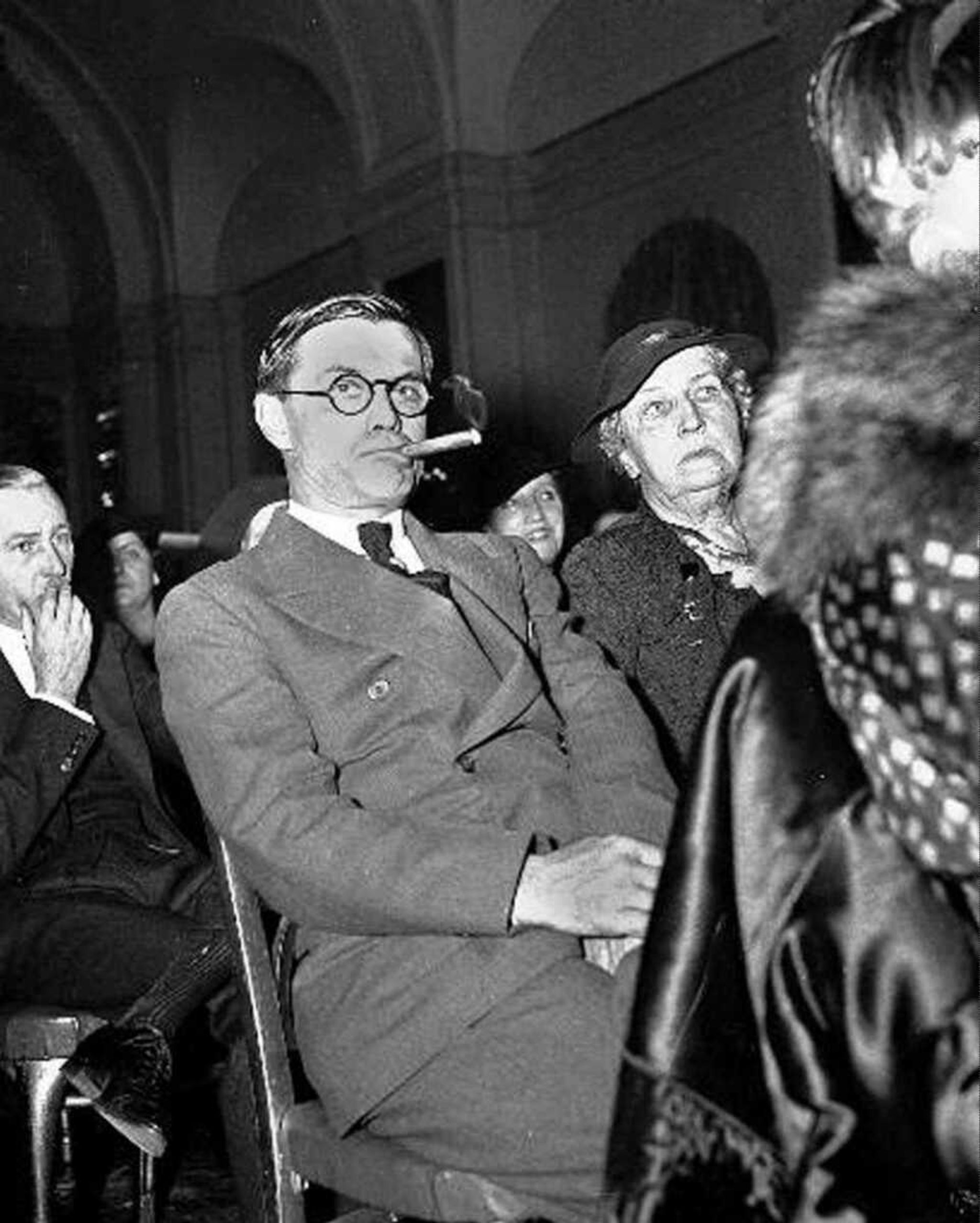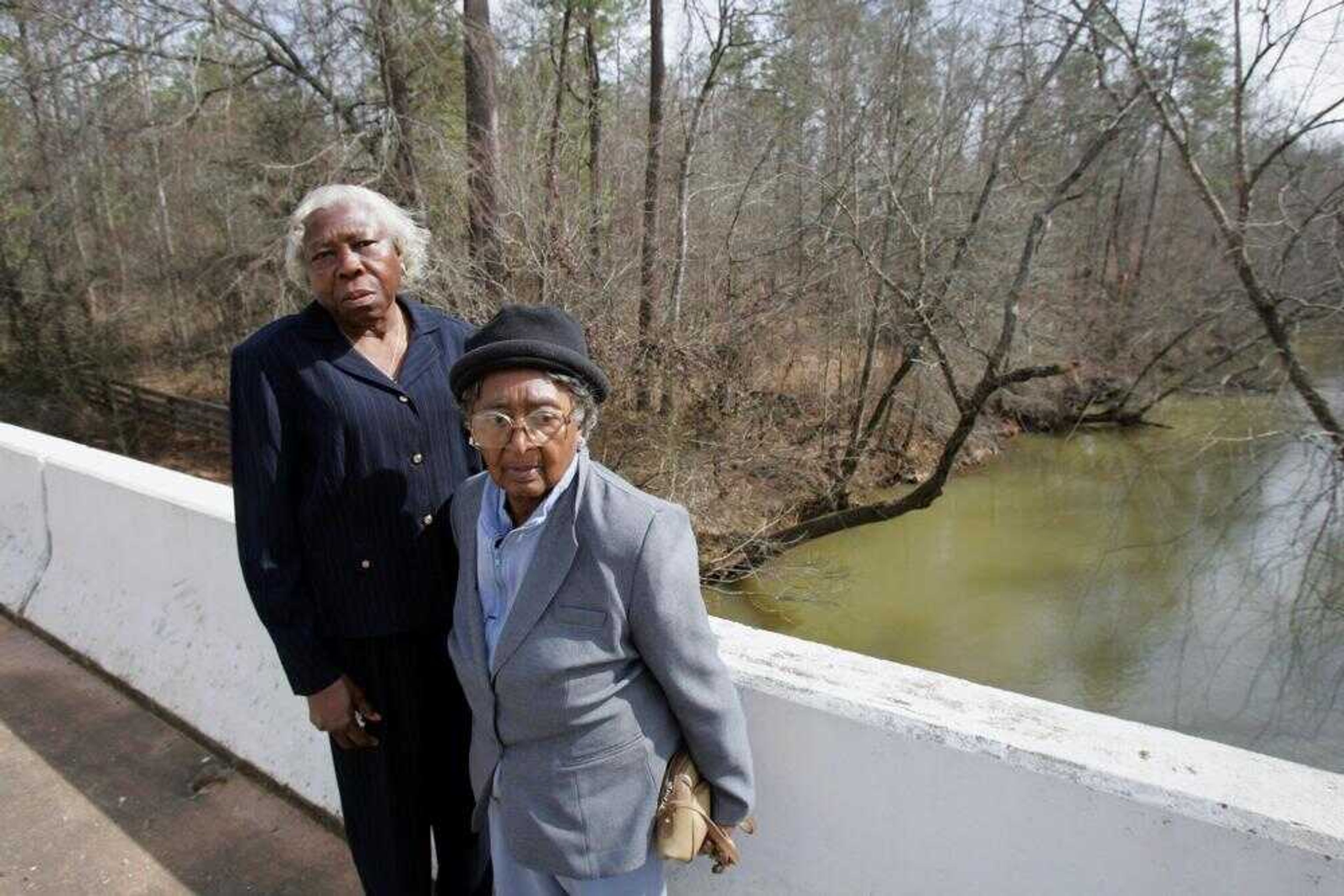Files show investigators were suspicious of Georgia governor in 1946 lynching
MONROE, Ga. -- Newly released files from the lynching of two black couples more than 60 years ago contain a disturbing revelation: The FBI investigated suspicions that a three-term governor of Georgia sanctioned the murders to sway rural white voters during a tough election campaign...
MONROE, Ga. -- Newly released files from the lynching of two black couples more than 60 years ago contain a disturbing revelation: The FBI investigated suspicions that a three-term governor of Georgia sanctioned the murders to sway rural white voters during a tough election campaign.
The 3,725 pages obtained by The Associated Press under the Freedom of Information Act do not make conclusions about the still-unsolved killings at Moore's Ford Bridge. But they raise the possibility that Eugene Talmadge's politics may have been a factor when a white mob dragged the four from a car, tied them to a tree and opened fire.
"I'm not surprised ... historians over the years have concluded the violently racist tone of his 1946 campaign may have been indirectly responsible for the violence that came at Moore's Ford," said Robert Pratt, a University of Georgia history professor who has studied the case. "It's fair to say he's one of the most virulently racist governors the state has ever had."
Talmadge, who died just months after his 1946 election to a fourth term, dominated Georgia politics in the 1930s and 1940s with a mix of racism and pocketbook populism.
He came under FBI scrutiny because of a visit he made to the north Georgia town of Monroe two days before the Democratic gubernatorial primary and a day after a highly charged racial incident there, a fight in which a black sharecropper stabbed and severely wounded a white farmer. The sharecropper was one of the four people who would later be lynched.

In a report sent to FBI director J. Edgar Hoover, the agent in charge of the investigation said Talmadge met with George Hester, the brother of the stabbed farmer. Citing an unconfirmed witness statement, the agent said Talmadge offered immunity to anyone "taking care of negro."
While the agent dismissed the notion of Talmadge's involvement as "unbelievable," he said it still merited investigation. Other memos raised suspicions that state employees could even have been active participants in the lynching.
FBI agents took note of the political stakes. Talmadge faced a tough challenge in the Democratic primary -- which was then tantamount to the general election -- and Walton County was still up for grabs.
Talmadge eventually won the county by roughly 200 votes, with overwhelming support from the Blasingame District where the Hester family lived.
In the FBI memo to Hoover, the agent cited the opinion of Monroe assistant police chief Ed Williamson, who had spotted Talmadge meeting in front of the Walton County Courthouse with the brother of the stabbed farmer.
"The opinion on Mr. Williamson's part was that this conversation between Talmadge and Hester probably resulted in the Blasingame District going very definitely in the Talmadge column," read the memo.
Votes from small rural counties played a crucial role in Georgia's elections then because primaries were decided by a "county unit system," similar to the electoral college, which minimized the impact of urban centers.
In fact, Talmadge's challenger, James V. Carmichael, actually received the most popular votes but lost the election because of Talmadge's strong support in rural areas.
Today, Talmage is remembered with a statue on the grounds of the Capitol. His name is also on the steel bridge spanning Savannah's harbor.
"I don't think my grandfather's involved in any lynching," said Herman Talmadge Jr., who said he was 4 at the time. "If y'all are that far off, I feel sorry for you."
The investigation of Talmadge began in the months before his death in December 1946 and it appears he was never interviewed. The allegation of his possible involvement was not included in the FBI's official report, but was sent to Hoover in a letter "as it may be of some possible future interest."
The lynchings of Roger and Dorothy Malcom, and George and Mae Murray Dorsey on July 25, 1946, came eight days after the election and followed weeks of simmering tensions.
There were rumors that George Dorsey, an Army veteran, had secretly been dating a white woman -- a taboo in the segregated South. And the town's white establishment was enraged with Roger Malcom, who was imprisoned after stabbing white farmer Barney Hester.
Malcom was waiting in jail when white farmer Loy Harrison paid $600 to bail him out.
Harrison said he was driving Malcom, his wife and the other couple home, when he was ambushed by a white mob that surrounded his car near the Moore's Ford Bridge. As many as 30 people converged on the vehicle and pulled out the two couples, dragged them down a nearby trail and tied them to trees.
Then the mob fired three volleys of bullets at the couples, leaving their dead bodies slumped behind in the dirt. One of the victims, Dorothy Malcom, was seven months' pregnant.
An outraged President Truman dispatched FBI agents to Monroe, about 45 miles east of Atlanta. But the local community -- both white and black -- clammed up.
White farmers were described by the FBI as "extremely clannish, not well educated and highly sensitive to 'outside' criticism." Harrison, for one, told police he couldn't identify any of the participants.
Black families, who often sharecropped on white farms, were "frightened and even terrified" when approached by FBI agents. One farmer fled into a cotton field and had to be chased down, eventually telling an investigator he had been warned not to talk.
Eventually, the FBI identified 55 possible suspects, including George Hester, but no one was ever arrested. After a federal grand jury in December 1946 could not identify any members of the mob, the FBI retreated from the case.
The case grew colder for years, until 1991 when Clinton Adams came forward, claiming he saw the lynching unfold when he was a 10-year-old while hiding in the bushes near the bridge.
While expressing some hope at the time, an FBI memo pointed to a nagging problem -- "finding anyone who is left alive to prosecute."
The FBI previously released a 500-page summary of the case file, but the full file was only released this week after the AP appealed to the Justice Department for more than two years.
The Moore's Ford lynching is among about a dozen other unsolved cases from the civil rights era that the FBI has recently reopened but the bureau refused to comment on the ongoing investigation.
Local activists weren't shocked to learn that agents investigated Talmadge and the possibility of state employees being involved.
"It would not surprise me if state officials at all levels were implicated, if not in the actual killings, at least in the cover-up that followed," said Rich Rusk, secretary of the Moore's Ford Memorial Committee. "The conspiracy of silence wasn't just the fault of the local farmers. It was the entire culture, from the top down."
The case file says more than 10,000 interviews were conducted and among the evidence were dozens of slugs, samples of torn shirts and pieces of rope. Investigators never detailed any proof of state involvement. They also found little hard evidence linking any of the suspects to the murders.
Local activists haven't given up hope. Some still search for aging witnesses. To drum up interest in the case, a protest march is held each April and a re-enactment is staged on the anniversary each July.
Bobby Howard, a local activist who's roamed the neighborhoods for decades in search of possible witnesses, said the key is getting past the crippling fear that still grips many in the community.
"They had a right to feel the way that they did," he said. "It's sad that today, it's still the same way, with all that fear in these people."
Connect with the Southeast Missourian Newsroom:
For corrections to this story or other insights for the editor, click here. To submit a letter to the editor, click here. To learn about the Southeast Missourian’s AI Policy, click here.









